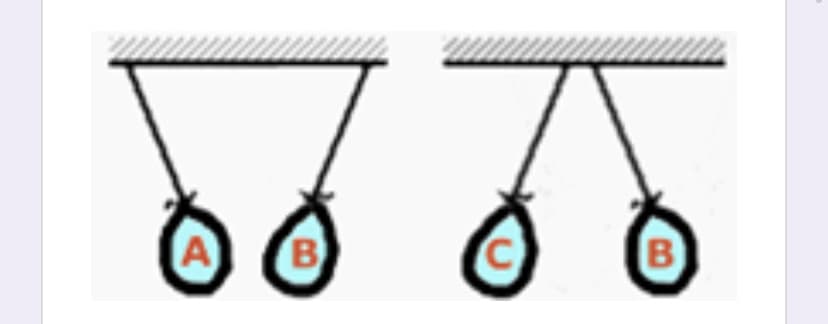The following charge interactions between balloons A, B and C are observed. It is known that balloon B is charged negatively. Based on these observations, determine the possible charges (positive, negative, or neutral) of balloons A and C and explain your reasoning.
The following charge interactions between balloons A, B and C are observed. It is known that balloon B is charged negatively. Based on these observations, determine the possible charges (positive, negative, or neutral) of balloons A and C and explain your reasoning.
Chemistry: Matter and Change
1st Edition
ISBN:9780078746376
Author:Dinah Zike, Laurel Dingrando, Nicholas Hainen, Cheryl Wistrom
Publisher:Dinah Zike, Laurel Dingrando, Nicholas Hainen, Cheryl Wistrom
Chapter22: Substituted Hydrocarbons And Their Reactions
Section: Chapter Questions
Problem 10STP
Related questions
Question
The following charge interactions between balloons A, B and C are observed. It is known that balloon B is charged negatively. Based on these observations, determine the possible charges (positive, negative, or neutral) of balloons A and C and explain your reasoning.

Transcribed Image Text:A
B
B
Expert Solution
This question has been solved!
Explore an expertly crafted, step-by-step solution for a thorough understanding of key concepts.
This is a popular solution!
Trending now
This is a popular solution!
Step by step
Solved in 2 steps

Knowledge Booster
Learn more about
Need a deep-dive on the concept behind this application? Look no further. Learn more about this topic, chemistry and related others by exploring similar questions and additional content below.Recommended textbooks for you

Chemistry: Matter and Change
Chemistry
ISBN:
9780078746376
Author:
Dinah Zike, Laurel Dingrando, Nicholas Hainen, Cheryl Wistrom
Publisher:
Glencoe/McGraw-Hill School Pub Co

Chemistry: Matter and Change
Chemistry
ISBN:
9780078746376
Author:
Dinah Zike, Laurel Dingrando, Nicholas Hainen, Cheryl Wistrom
Publisher:
Glencoe/McGraw-Hill School Pub Co